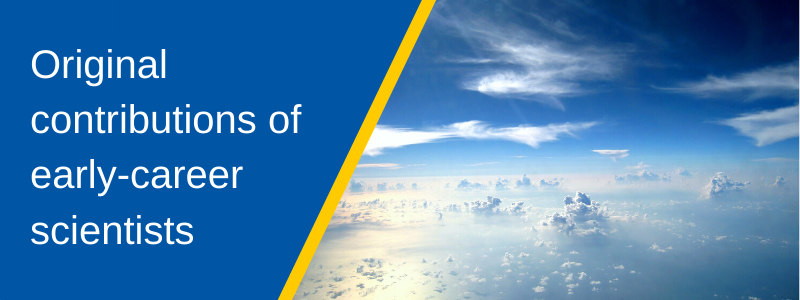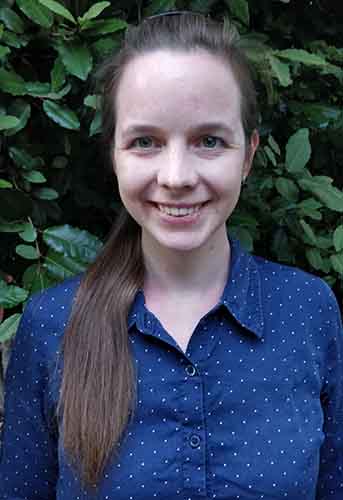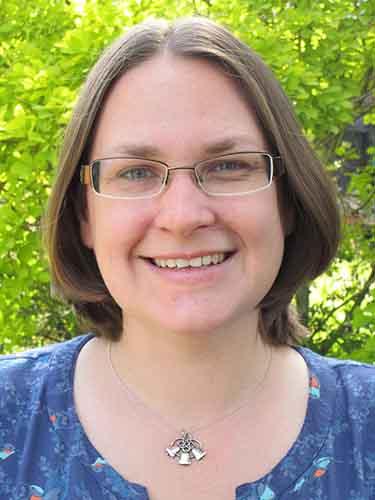

Prize for original contributions of early-career scientists
The Malcolm Walker Award aims to recognise and encourage new environmental researchers from a wide range of disciplines.
The L F Richardson Prize is awarded annually for a meritorious paper which was published in a Society journal during the preceding four years and was contributed by a member of the Society who is in their early career in meteorology.
2019 Awards & Prizes
- Distinguished work and careers
- Outstanding contributions published in the Society’s journals
- Original research, innovation and significant contribution to meteorology and its application
- Original contributions of early-career scientists
- Outstanding contribution in public outreach and communication
- Outstanding contribution or service to the Society or the Society’s journal Weather
- Journal Editor's Awards
Resources
Malcolm Walker Award
Dr Emma Howard

Southern African climate, poised between the tropical convective region of the Congo Basin and the midlatitude storms of the Southern Ocean, has long been regarded as one of the problem climates of the planet. A renewed focus has fallen on the region given the projected drying for the latter half of the twenty-first century simulated in climate models. Our understanding of that projected drying is constrained given that it takes place at the southern edge of the tropical convective belt, where our grasp of climate dynamics has drifted into obscurity over the last few decades, notwithstanding the emergence of new satellite and reanalysis data sets.
Without Emma’s work, the role of tropical lows and the important role of the Congo Air Boundary in climate change in one of the truly complex regions of global climate would have remained unknown. Emma’s research, in particular her novel insights, methods and originality, coupled with the resurrection of concepts long forgotten, has accelerated our grasp of climate dynamics for a key region of the planet.
Taking the view that connecting the meteorology and climate of the region would be the most profitable and revealing approach, Emma decided to work on the dynamics and characteristics of the circulation along the tropical edge. A key focus of Emma’s work has addressed dynamical meteorology of tropical lows and a feature called the Congo Air Boundary.
Early research on southern Africa qualitatively identified and discussed the existence of the Congo Air Boundary. In a time when weather forecasters doubled for climate researchers, pioneers and doyens of early climate science, like Dr JJ Taljaard, pointed out the likely existence of a convergence zone which featured air from two surrounding ocean basins and which marked the dry boundary of wet tropical rainbelt to the north. However, much of the work remained anecdotal such that for the last twenty to thirty years the feature is all but absent from the climate science and meteorological literature.
Emma, using her considerable skills honed during her prize-winning undergraduate degree in Mathematics, has not only resurrected the discussion of the feature, but in a set of papers in prominent climate journals, developed a novel method for automated detection of the Congo Air Boundary using the best modern data sets to hand, including the ECMWF ERA5 high resolution reanalysis. Her detection methods included multi-stage algorithms from computational theory, such as Canny edges borrowed from the field of image processing.
The surprise in her work is how clearly the Congo Air Boundary is revealed by her detection algorithm, and, moreover, the fidelity with which quite coarse resolution global coupled climate models are able to detect the feature. The projected drying is shown to occur because the Congo Air Boundary, which effectively withholds rain from southern Africa, breaks down about half a month later in future decades compared with present. These sorts of physical insights into climate dynamics behind climate change enhance confidence with which we can embrace projections and address societal adaptation measures.
|
|
|---|
L F Richardson Prize
Dr Joanne Waller

Since 2014 Dr Joanne Waller has published a series of innovative papers, reporting significant advances in understanding and implementing new observation uncertainty techniques. The focus of these is on accounting for the correlation of errors in observations in the data assimilation methods that lie at the heart of modern Numerical Weather Prediction (NWP) systems. They have resulted in advances in theoretical understanding, alongside significant improvements in NWP forecast skill.
Data assimilation combines forecast model data with heterogeneous observations to provide gridded information on variables such as temperature, pressure, wind and humidity across the region of interest. Mathematically, the assimilation problem is a large Bayesian statistical estimation problem, where the model and observation data are weighted by their respective uncertainties. It is crucial to the accuracy of the forecast that these error statistics are correctly specified. However, the relationships (or “correlations”) between the uncertainties of neighbouring observations are difficult to estimate, and so usually neglected. The assumption of zero correlations is often used with data thinning methods, resulting in a loss of information that has become increasingly important. Accounting for these correlations improves the use of observations that have high frequency both in space and time, such as those from satellites and, in particular, weather radar (especially Doppler winds) that has particular application to the short-range forecasting of extreme precipitation.
Work at the University of Reading adapted a simple technique collecting statistics from observation-model comparisons to diagnose the observation error correlations between different channels. The technique, however, produced surprising and controversial results that required rigorous theoretical understanding along with practical testing before they could be used with confidence. Dr Waller’s papers address the full range of issues, from the underlying mathematical theory to the operational implementation and testing. The paper she led and published in the Quarterly Journal of the Royal Meteorological Society, 'Theoretical insight into diagnosing observation error correlations using observation-minus-background and observation-minus-analysis statistics' (2016), is of particular importance. This paper is an outstanding example of work, which combines challenging and innovative science with application in operational forecast systems and demonstrable impact on the quality of forecasts. It presents a careful mathematical analysis of a technique for observation uncertainty estimation, that has provided data assimilation scientists with evidence on the validity of the technique and the likely deficiencies of the observation uncertainty estimates.
Dr Waller’s work is also an outstanding example of a careful and systematic approach to taking rigorous science through to operational application, and has required actively promoting close collaboration with scientists in both the Met Office and Deutscher Wetterdienst as well as her academic colleagues.
|
|---|
Dr Gerard Kilroy

Dr Gerard Kilroy was nominated for the 2019 Richardson Prize for his paper entitled "A unified view of tropical cyclogenesis and intensification" Q.J.R. Meteorol. Soc., 143: 450–462, January 2017. Although this paper has two co-authors, Dr Kilroy was lead author and did the vast majority of the work. Without his impressive computational skills, the study would simply not have been possible. The paper is ground-breaking because it has been previously assumed that tropical cyclogenesis and tropical intensification are separate processes. This view is reflected in all previous World Meteorological Organization Workshops on Tropical Cyclones going back to 1985, where genesis and intensification are always treated as separate topics.
Dr Kilroy's idealised numerical model simulations indicate that the basic fluid dynamical processes of genesis and intensification are the same and involve the aggregation of convectively-amplified vertical relative vorticity to form a monopolar distribution of cyclonic vorticity on the mesoscale. The study shows that much of this organisation takes place while the wind speeds in the proto-vortex are relatively light, much less than gale force. It shows also that the frictional boundary layer plays an important role in organising deep convection, even when the vortex circulation is still weak. Moreover, the convectively-induced overturning circulation, which is strongly influenced by the boundary layer, is the most important factor in vorticity aggregation, dwarfing the effects of vortex merger by purely barotropic processes. Finally, in this and follow on studies, Dr Kilroy has shown that it is unnecessary to invoke a trigger to explain genesis and that the existence of a mid-level vortex is not crucial to the genesis process, even though such a vortex may be present prior to genesis.
Dr Kilroy’s paper is strongly befitting of the L F Richardson Prize, not only because it is based on numerical simulation of the governing primitive equations, but because it has opened up a whole new avenue of research in which Dr Kilroy has taken the lead role. Indeed, five further papers on this topic have already been published in the Quarterly Journal, four of them with Dr Kilroy as lead author and the other with his Master’s student as lead author.
|
|---|

